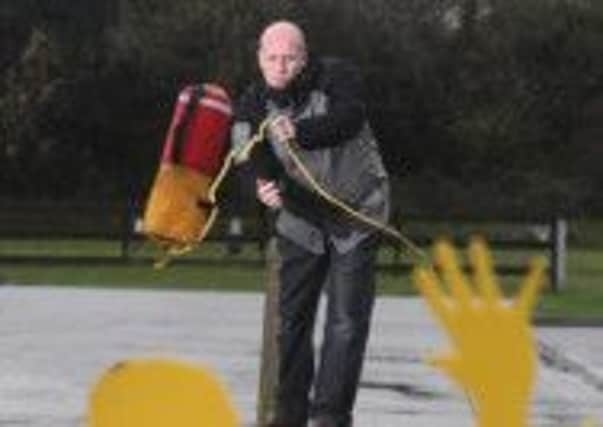‘MAIL’ reporter Graeme Cousins learns how to save a life thanks to a pioneering new programme at Kinnego Marina


Last week staff at Craigavon Borough Council’s Kinnego Marina led the way by pioneering a new approach to water safety training.
The ‘MAIL’ was invited along and reporter Graeme Cousins got to see first hand the importance of having the correct safety equipment when working or taking part in leisure activities around water.
Advertisement
Hide AdAdvertisement
Hide AdThe ‘dry’ launch of the water safety training took place last Thursday at Kinnego Marina and was attended by a number of interested parties from other marinas and water activity-based organisations throughout Northern Ireland.
Being the outsider Graeme quickly learned that simply having a life jacket on wasn’t the catch-all guarantee that many people think.
If life jackets don’t fit or haven’t been checked for wear and tear or weaknesses in the mechanism, they’re as much use as not having one on at all.
In fact, in the case of wearing a life jacket which is far too big it can actually endanger your life when you go into the water by slipping up and blocking your airways.
Advertisement
Hide AdAdvertisement
Hide AdIt’s also important to wear a life jacket suitable for your needs if you’re working for long periods around water. If you’re carrying out manual work it’s impractical to wear a bulky jacket that gets in the road so the tendency is to take it off.
Better advice would be to go for a smaller life jacket. Some modern jackets are no bigger than a scarf, which when uninflated fit snugly around your neck.
Another useful addition is a crotch strap to stop the jacket slipping up when in the water.
It was noted that a further danger with life jackets is jumping into the water with a jacket fully inflated. This could result in jarring to the neck depending on how you impact the water due to the buoyancy of the device.
Advertisement
Hide AdAdvertisement
Hide AdIn most cases it’s recommended those attempting a rescue don’t get into the water if at all possible.
Staff at Kinnego gave a live rescue demo in the water then allowed those in attendance on Thursday got to try out a life line kit which can be used instead of a rubber ring to send a rope to someone who is struggling in the water.
Our reporter found the kit extremely easy to use and commented: “Essentially it’s just a rope bunched up inside a bag to give the object you’re throwing a bit of weight. As it travels the rope unfurls and the weight of the bag on the end of the rope is negligible. It’s a simple idea and a very practical lifesaving tool.”
Kinnego Marina Training Centre in partnership with the Royal Life Saving Society (RLSS) were delighted to announce the launch of the National Water Safety Management Programme (NWSMP) which meets the civil and statutory safety management obligations of employers.
Advertisement
Hide AdAdvertisement
Hide AdThe local marina is the first to bring this vital occupational water safety training to Northern Ireland.
“It’s practical preventative training,” said Oxford Island Manager/ Harbour Master of Kinnego Marina Paddy Prunty.
“It’s not long winded but rather basic hazard awareness tailored for each organisation. Employers who’ve construction workers working every day near or close to water will need extensive training in comparison to those who only occasionally work around water”.
“It’s also about assessing the hazard. Is the water cold, freeflowing or still. Are there unseen hazards. If someone gets into difficulty it may be the case that instead of immediately jumping in to rescue you could throw them a line – and we will train people on how to do that.”
Advertisement
Hide AdAdvertisement
Hide AdThe National Water Safety Management Programme is a suite of interlinked training awards designed for any organisation with employees who work in, on or near water. This ranges from an entry level for teachers who need basic water safety competency around water rather than full water rescues capability, to the more advanced in-water rescue.
Courses for the remainder of 2014 and for 2015 are being scheduled now and the staff at Kinnego Marina also hope to take the course on the road and to schools and youth organisations.
For further information contact Kinnego Marina on 3831 6587.